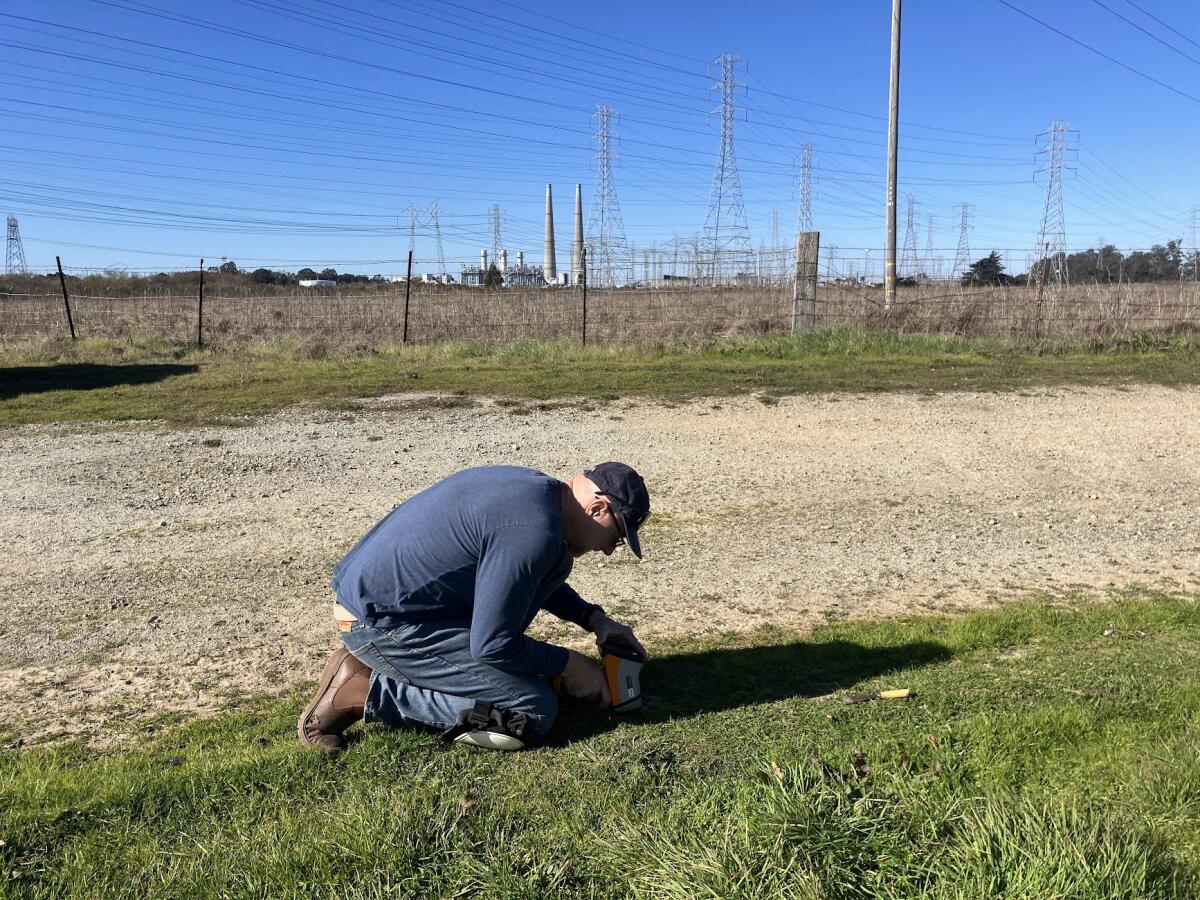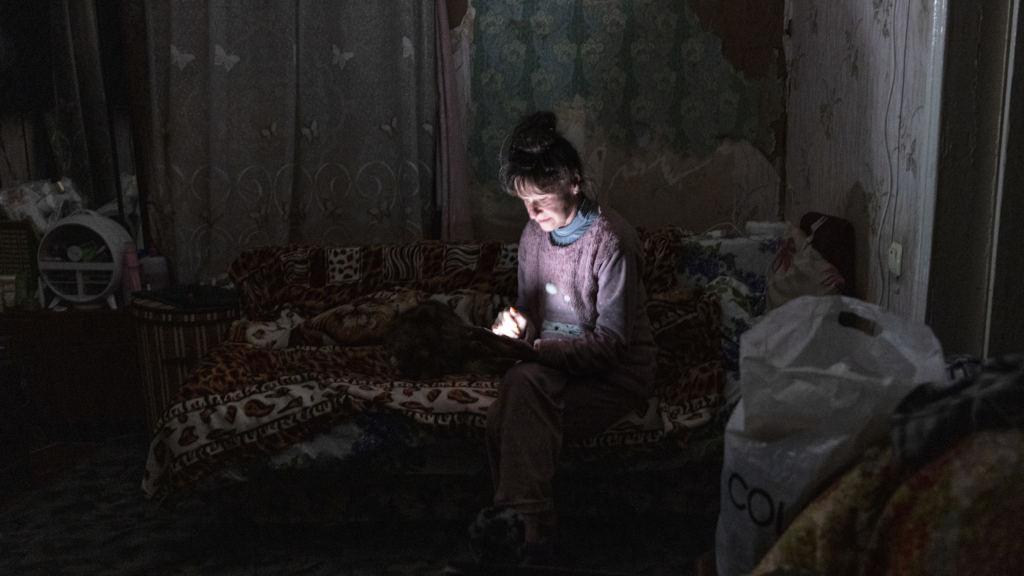Four months after a massive fire ignited in Monterey County at one of the world’s largest lithium-ion battery storage facilities, Pacific Gas & Electric said it intends to reactivate an adjacent battery site by June to meet summer energy demands.
The plan comes over the objections of county officials who requested that both facilities remain offline until the cause of the January fire in rural Moss Landing is determined.
“I had hoped that PG&E would take a more transparent and collaborative approach in addressing the concerns of our surrounding communities, which are still grappling with the fallout of the largest BESS [battery energy storage system] fire in history,” Monterey County Supervisor Glenn Church wrote on Facebook on May 8.
“Restarting operations before investigations are complete and before stronger emergency protocols are in place is disappointing and deeply troubling,” he said.
The PG&E facility is one of two battery energy storage systems at the Moss Landing power complex near Monterey Bay. The other is owned by Texas-based Vistra Corp. The batteries store excess energy generated during the day and release it into the power grid during times of high demand, including evening hours.
Both facilities have been offline since Jan. 16, when a Vistra-owned building containing 99,000 LG battery modules caught fire, spewing toxic gases into the air and prompting the evacuation of some 1,500 people.
The adjacent Elkhorn Battery Energy Storage Facility — which is owned by PG&E and maintained by both the utility company and Tesla — did not burn. But it automatically shut down when its safety equipment detected the fire in the Vistra building.
The Elkhorn energy storage facility includes 256 stationary Tesla Megapacks — essentially shipping container-sized units filled with battery modules. The Megapacks, according to PG&E, stand on 33 concrete slaps at the Elkhorn facility.
Author John Steinbeck’s sardine boat, the Western Flyer, docked in the Moss Landing harbor in 2023. The old smokestacks from a power plant near the harbor can be seen in the background. The power plant complex now includes battery energy storage facilities.
(Brian van der Brug / Los Angeles Times)
In a May 7 letter to Chris Lopez, chairman of the Monterey County Board of Supervisors, PG&E vice presidents Dave Gabbard and Teresa Alvarado said “Tesla and PG&E have performed extensive inspection and clean-up” at the Elkhorn Facility and intend to restart it by June 1.
After the fire, each of the Megapacks was disassembled and vacuum-cleaned, and environmental monitoring was conducted on and around the site, Gabbard and Alvarado wrote.
“The Elkhorn Facility, as constructed, allows for efficient storage and use of power,” they wrote. “As summer approaches, that power is necessary to effectively manage the demands of the California power grid and to protect PG&E’s customers from power limitations and related impacts.”
A PG&E statement provided to The Times said: “We understand that the safety and well-being of our community is of utmost importance.” The battery facility, the statement reads, provides “cost savings for electric customers” and helps “support the state’s decarbonization goals.”
In his May 8 Facebook post, Church, whose district includes Moss Landing, wrote that the Board of Supervisors on Jan. 22 sent a letter to PG&E and Vistra requesting that their facilities not return to operation until “the cause of the Vistra fire, as well as a previous fire at the PG&E battery storage facility, are determined and appropriately addressed.”
That letter, he wrote, also requested that both companies develop “robust emergency response plans — based on a ‘catastrophic worst-case scenario’ involving full facility conflagration” for the county and other relevant agencies to review.
Although emergency response plans are required by law, he added, existing state standards “are limited in scope and do not provide the level of detail or realism” that county officials needed to ensure public safety.
“In previous discussions, PG&E indicated that a return to service would not occur until much later this year or beyond,” Church wrote.
County officials have “expressed concern” about the return to service and have reached out to facility operators to ensure emergency plans “adequately provide for the safety of the surrounding communities and the environment,” Nick Pasculli, a Monterey County spokesman, said in a statement provided Thursday.
“At this time, however, the County feels it is prudent to encourage PG&E to delay reactivation and continue to engage in additional open, transparent dialogue with County officials, first responders, and the residents we collectively serve,” the statement reads.
According to a Vistra website detailing the aftermath of the fire, an internal investigation is ongoing, and the cause of the blaze “remains unknown.”
A California Public Utilities Commission investigation into the blaze also is ongoing, Terrie Prosper, a spokesperson for the regulatory agency, told The Times.
Vistra’s battery energy storage system stands on the old site of the Moss Landing Power Plant, a gas-powered facility — originally built and operated by PG&E — whose twin smokestacks have towered over the region since 1950. Vistra acquired the plant in 2018 and demolished it to make way for the battery facilities, leaving the iconic smokestacks behind.
In a February statement, PG&E noted that the Vistra facilities are “located adjacent to — but walled off and separate from — PG&E’s Moss Landing electric substation.”
In September 2022, a fire ignited in a single Tesla Megapack at PG&E’s Elkhorn facility, five months after the battery energy storage system came online. The blaze, monitored by first responders, was allowed to burn itself out and had visible flames for about six hours, according to an investigation report by Energy Safety Response Group, an independent consulting firm.
PG&E, in its letter this month to the county, said the cause of that fire was water that had entered the Megapack “due to the improper installation of deflagration vent shield panels.” Tesla made fixes to all 256 Megapacks after the blaze, the utility company wrote.

Ivano Aiello, chair of the San José State University Moss Landing Marine Laboratories, conducts soil sampling at the Elkhorn Slough Reserve in January. A battery power system at the Moss Landing Power Plant, seen in the background, caught fire days earlier.
(San José State University’s Moss Landing Marine Laboratories)
The longer, more destructive Vistra fire this year cast a pall over the clean energy industry in California, which in recent years has become more reliant upon renewable energy, electric vehicles and other battery-powered devices as state officials push to dramatically reduce planet-warming greenhouse gas emissions.
The Vistra blaze prompted calls for additional safety regulations around battery storage, as well as more local control over where storage sites are located.
Firefighters allowed the Vistra blaze to burn itself out, citing the dangers of dousing lithium-ion battery fires with water, which can cause dangerous chemical reactions. The fire, contained to a single building, smoldered for several days in mid-January.
In late January, scientists at San José State University recorded a dramatic increase in nickel, manganese and cobalt — materials used in lithium-ion batteries — in soil samples at the Elkhorn Slough Reserve, a nearby estuary that is home to several endangered species.
The damaged Vistra building — filled with both burned and unaffected lithium-ion batteries — remained volatile. On Feb. 18, the fire reignited and burned for several hours. Vistra wrote on its website that “additional instances of smoke and flare-ups are a possibility given the nature of this situation and the damage to the batteries.”
“Since the January 16 fire, Vistra has brought in a private professional fire brigade that is onsite 24/7 to monitor the Moss 300 building,” the company wrote.
That structure, a former turbine building, contained a 300-megawatt system made up of about 4,500 cabinets, with each containing 22 individual battery modules, Meranda Cohn, a Vistra spokesperson, told The Times in an email. Of the 99,000 individual battery modules in the building, she said, about 54,450 burned.
“Demolition on the Moss 300 building will begin once all batteries have been safely removed and discharged, and all debris (concrete, steel, piping) has been removed from the site,” Cohn wrote.
In February, four residents who live near the facility sued Vistra, PG&E and LG Energy Solution, accusing the companies of failing to maintain adequate fire safety systems.
They alleged that they were exposed to toxic smoke emissions that caused nosebleeds, headaches, respiratory problems and other health issues. Environmental advocate Erin Brockovich is working with law firm Singleton Schreiber on the suit.
Times staff writer Clara Harter contributed to this report.

